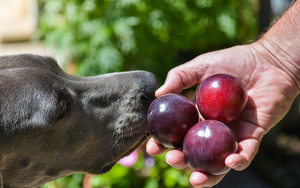What should I do if my dog has cystitis?

If your dog is showing signs of cystitis, it means that the bladder is inflamed, often due to a bacterial infection, though other causes such as bladder stones, trauma, or even stress can also contribute to the condition. Cystitis can be uncomfortable
and, in some cases, lead to more serious complications if not addressed promptly. Here’s what you should do if you suspect your dog has cystitis:
Common Symptoms of Cystitis:
- Frequent urination or difficulty urinating
- Blood in the urine (you may notice pink or red discoloration)
- Painful urination, which might cause your dog to whimper or act restless
- Licking of the genital area more than usual
- Accidents in the house, even if your dog is house-trained
- In severe cases, symptoms like lethargy, loss of appetite, or fever can occur
What to Do If Your Dog Has Cystitis:
1. Consult Your Veterinarian
The first thing you should do is take your dog to the vet for a proper diagnosis. Cystitis can have several causes, such as bacterial infections, bladder stones, or even tumors. Your veterinarian will likely perform a urinalysis or urine culture to pinpoint
the underlying cause of the cystitis and recommend the most effective treatment.
2. Follow Your Vet’s Treatment Plan
Treatment will depend on the cause of your dog’s cystitis. Common treatments may include:
- Antibiotics: If a bacterial infection is present, your vet will likely prescribe antibiotics. Be sure to follow the full course as directed, even if your dog starts to feel better before finishing the medication.
- Pain Management: Cystitis can be painful, and your vet may recommend pain relief to make your dog more comfortable.
- Dietary Changes: If bladder stones or urinary crystals are suspected, your vet might suggest a special diet to help dissolve the stones and prevent new ones from forming.
3. Encourage Hydration
It’s important to keep your dog well-hydrated to flush out toxins and bacteria from the bladder. You can encourage your dog to drink more water by providing fresh water frequently, or adding some low-sodium broth to their food. Wet food can also help
increase fluid intake.
4. Provide a Stress-Free Environment
Stress can exacerbate bladder issues, so it’s important to create a calm and quiet environment for your dog. Avoid any sudden changes in their routine, and make sure they have a comfortable place to rest and recover.
5. Monitor for Changes
Keep a close eye on your dog’s behavior during recovery. If symptoms like painful urination, blood in the urine, or frequent accidents continue or worsen, contact your vet right away. In rare cases, cystitis can lead to more serious complications like
bladder rupture or kidney infections, which require urgent care.
When to Seek Immediate Help:
If your dog is unable to urinate, is experiencing severe pain, or shows signs of fever or lethargy, this may indicate a more severe condition, and you should seek veterinary care immediately.
Why Use PettureX APP?
Managing cystitis and other pet health issues can be overwhelming, especially when you’re trying to navigate symptoms and treatments. That’s why the PettureX APP can be a valuable resource. PettureX is powered by advanced AI technology,
offering you the most comprehensive and professional pet care knowledge available. With 24-hour online consultations, you can quickly get answers to your questions, whether you’re dealing with cystitis, chronic diseases, or other complex conditions.
The app helps you get the right pet care plan at any time of day or night, providing peace of mind when you need it most.







